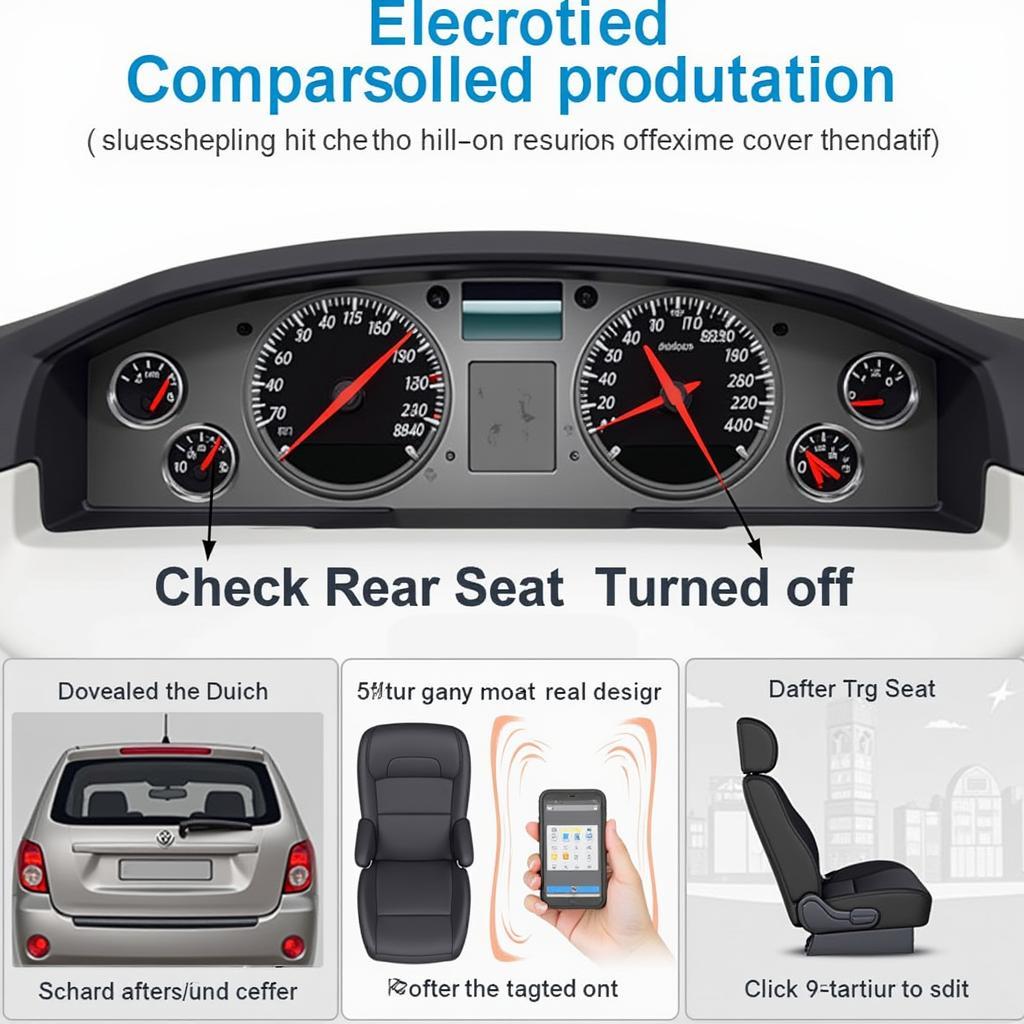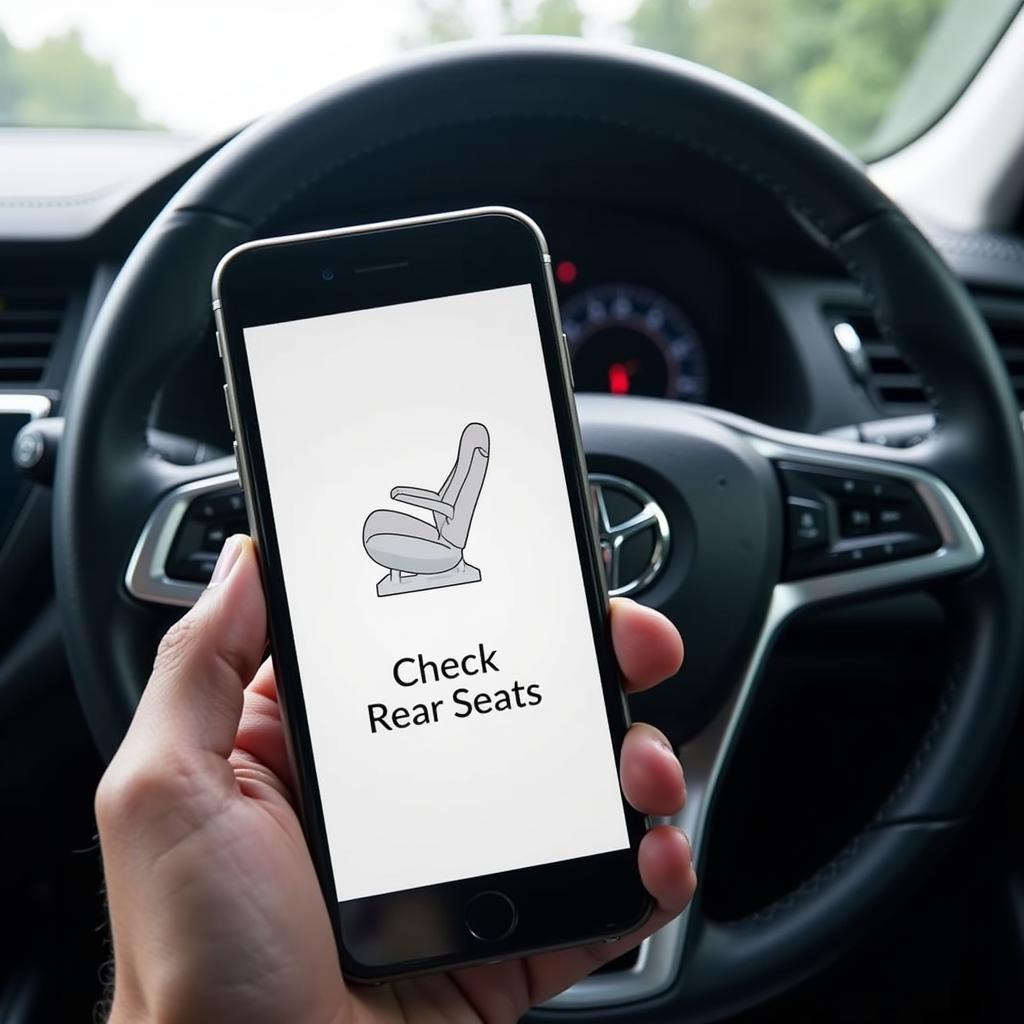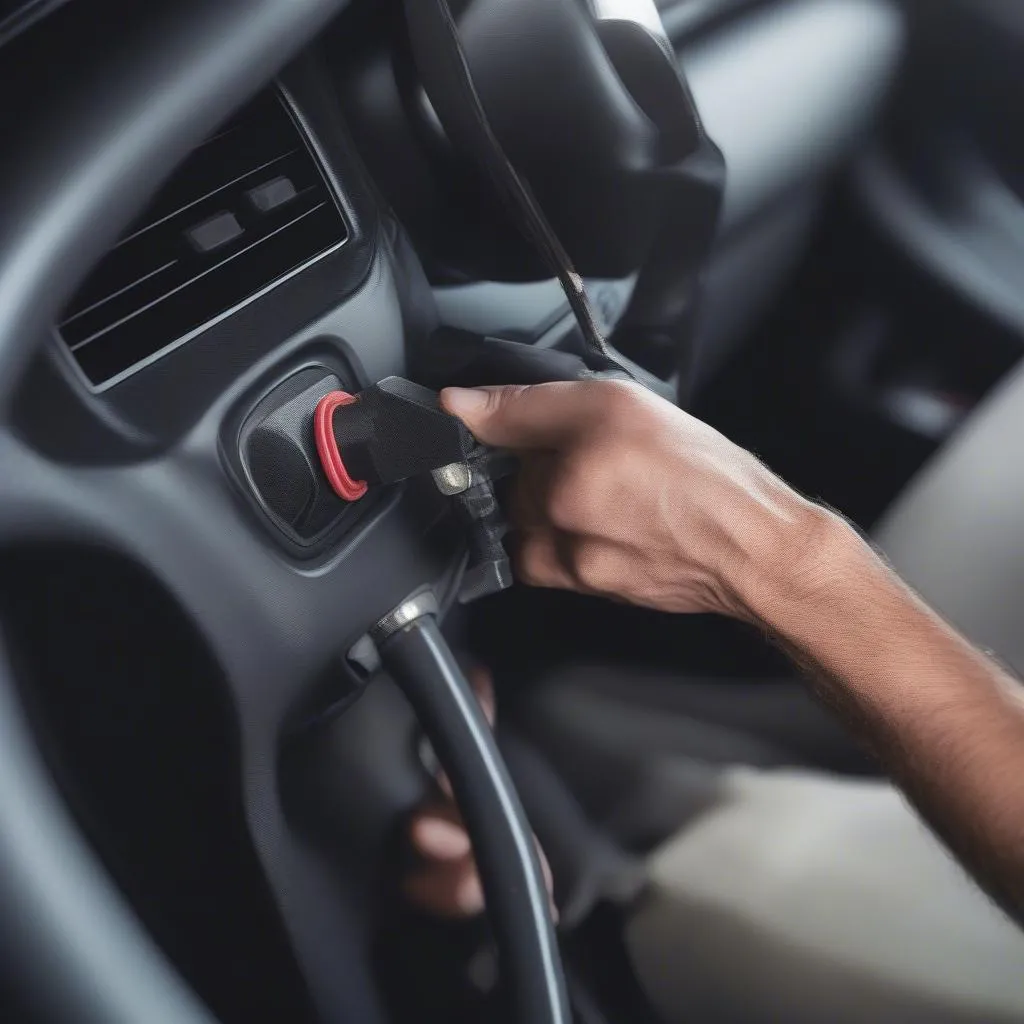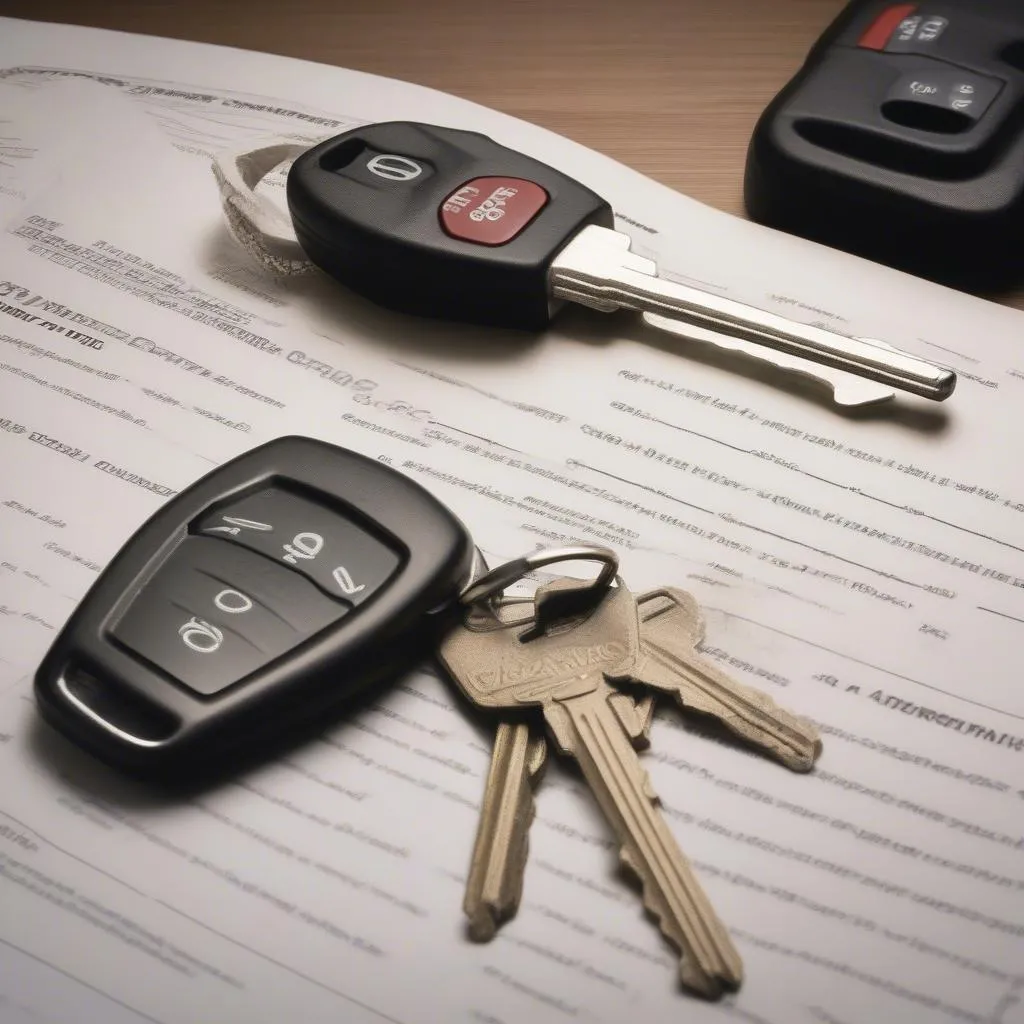The “car seat warn baby in car” system is a critical safety feature designed to prevent tragic hot car deaths. This system utilizes various sensors and alerts to remind drivers to check the back seat for a child after parking. However, like any technology, it can sometimes malfunction or be misinterpreted, causing unnecessary stress and confusion. This article delves into the intricacies of this system, common issues, and how to troubleshoot them.
How Does the Car Seat Warn Baby in Car System Work?
Most car seat warning systems work by detecting the presence of a child through various means:
- Weight Sensors: These sensors are embedded in the passenger seat and are triggered when a certain weight threshold is exceeded, indicating the presence of a child.
- Door Sequence Detection: This system monitors the sequence of doors opened and closed before and after a journey. If the rear doors are opened before a trip but not after, it may indicate a child was placed in the back.
- Ultrasonic Sensors: Some advanced systems use ultrasonic sensors to detect even the slightest movements in the back seat, such as a child’s breathing, triggering an alert if necessary.
 Car Seat Warning System Dashboard
Car Seat Warning System Dashboard
Common Causes of False Alarms
While these systems are highly sensitive to ensure safety, they can occasionally trigger false alarms due to various factors:
- Heavy Objects: Placing heavy groceries, luggage, or gym bags in the passenger seat can sometimes trigger the weight sensor, even without a child present.
- Sensor Malfunctions: Like any electronic component, the sensors can malfunction due to wear and tear, software glitches, or extreme temperatures.
- Door Sequence Misinterpretation: If you routinely open your rear doors for reasons other than transporting children, such as retrieving items or loading groceries, the system might misinterpret this as leaving a child behind.
Troubleshooting Car Seat Warning System Issues
If you’re experiencing issues with your car seat warning system, here are some steps you can take:
- Check for Obvious Triggers: Ensure there are no heavy objects on the passenger seat or in the footwell that could be setting off the weight sensor.
- Consult your Owner’s Manual: Your car’s owner’s manual will provide specific instructions on how to adjust the sensitivity of your vehicle’s system or reset any alerts.
- Update Car Software: Software updates often address known issues and improve the functionality of such systems. Check for available updates for your car’s make and model.
- Professional Inspection: If the issue persists, it’s crucial to consult a qualified mechanic or dealership for a professional diagnosis and repair of the car’s sensor system.
“Remember,” says John Smith, Senior Automotive Engineer at Car Safety First, “while these systems are invaluable safety features, they are not substitutes for responsible parenting. Always double-check the back seat before leaving your vehicle, regardless of any alerts or lack thereof.”
What to Do When the Warning System Activates
 Car Seat Warning System Phone Notification
Car Seat Warning System Phone Notification
If the warning system activates, it’s vital to take it seriously, even if you’re confident you haven’t left a child in the car. Here’s what you should do:
- Stop and Check: Immediately pull over to a safe location and thoroughly check the back seat, including the floor area, to ensure no child has been left behind.
- Disable the Alarm: Once you’ve confirmed there’s no child in the car, disable the alarm following the instructions in your owner’s manual.
- Investigate Further: If you frequently experience false alarms, it’s essential to troubleshoot the issue using the steps mentioned earlier or consult a professional.
Tips for Using Car Seat Warning Systems Effectively
- Familiarize Yourself: Take the time to thoroughly understand how your specific car seat warning system works by reading the owner’s manual.
- Customize Settings: Adjust the sensitivity of the system according to your needs and driving habits.
- Regular Maintenance: Like any car safety feature, regular checks and maintenance by qualified professionals can ensure the system’s effectiveness.
- Remain Vigilant: Never solely rely on technology. Always practice the “look before you lock” routine, checking the back seat every time you exit your vehicle.
Conclusion
“Car seat warn baby in car” systems are invaluable tools in preventing hot car tragedies. Understanding how they work, their limitations, and how to troubleshoot common issues can empower drivers to utilize these systems effectively while ensuring the safety of their precious cargo. Remember, while technology can be a powerful ally, vigilance and responsible parenting remain the most crucial factors in child safety.
FAQs About Car Seat Warning Systems
1. Are car seat warning systems mandatory in all vehicles?
While not yet mandatory in all countries, many new car models now come equipped with these systems. Regulations are continuously evolving to make these features standard for enhanced safety.
2. Can I install a car seat warning system in my older car?
Yes, aftermarket car seat warning systems are available and can be installed in older vehicles that lack this feature.
3. How reliable are car seat warning systems?
While generally reliable, these systems are not foolproof and can experience occasional malfunctions. It’s crucial to remain vigilant and never solely rely on technology for child safety.
4. Can I turn off the car seat warning system?
Most systems allow you to adjust sensitivity or temporarily disable alerts, but it’s generally not advisable to completely turn off this important safety feature.
5. What should I do if my car seat warning system keeps malfunctioning?
If you encounter persistent issues, it’s crucial to consult a qualified mechanic or your dealership for a professional diagnosis and repair to ensure the system functions correctly.


